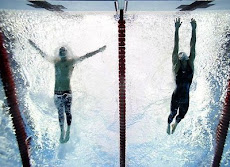
Defined by the World Anti-Doping Agency as “the non-therapeutic use of cells, genes, genetic elements, or of the modulation (adjusting) of gene expression, having the capacity to improve athletic performance", this relatively new form of performance enhancement is possibly going to turn doping on it’s head, while pushing ethics and morality in sport and the sport industry to the fore.
First of all, what is a Gene?
Inside human cells, genes provide a sort of “blueprint” or instruction for protein production. Genes are made up of chains or arrangements of DNA. This determines how the cell will function and also its physical attributes.
Gene doping developed out of the concept of gene therapy; treatment developed to cure or ease genetic diseases and disorders such as muscular dystrophy or sickle-cell anaemia. Damaged or flawed genes are replaced with modified, functional ones. These same techniques that can help ordinary people stay healthier could be used to create “superathletes”; weightlifters who “naturally” have larger thigh muscles, cyclists who have more aerobic/type 1 muscle fibers or higher aerobic enzymes produced in those muscles.
Changes in the expression of genes is not a new concept in the science of the human body. Many ordinary medicines can have this effect, as well as daily activities. Training and exercise at least partly modify the expression of one’s genes. But it’s this possibly permanent baseline transformation of the building blocks of the athlete’s body using technology that could be the next big illegal thing. (And possibly is already...). Universities of Washington and Florida were able to give trichromatic vision to squirrel monkeys (naturally dichromatic, using only two primary colours) using gene therapy, possibly leading to a treatment for colour blindness in humans in the future. Higher endurance and increase in musculature in “marathon mice” arose when a group of scientists studied three proteins controlled by a gene that influence how the body manages fats and sugars. This type of research eventually turned towards athletic performance.

How does gene doping work?
Usually a performance-enhancing gene is injected into an athlete carried in a harmless/damaged virus or bacteria (a vector; vehicle to transfer foreign genetic material into another cell). These synthetic genes now in the cells result in altered production of proteins/chemicals and cell function, continuing long-term in most cases.
One of the first gene therapy products associated with genetic doping appeared on the eve of the Turin 2006 Olympic Winter Games, where Repoxygen emerged as a possible substance in use at the Games. This medication was initially considered as a way to fight anaemia.
Detection can prove very difficult. The synthetic genes used most likely appear identical to the natural genes. Identifying the vector or particles of it is possible, but only through muscle biopsies (procedure in which a piece of muscle tissue is removed and examined microscopically). This is not ideal for athlete as some damage, swelling and weakness for a short time results. Genetic “bar codes” or markers can be produced by manufacturers/scientists for their therapeutic products, but this would require input from all relevant parties and administrators. Patterns of protein production and protein levels can also sometimes be analysed. The World Anti-Doping Authority is currently working on a test to check the expression of all 25,000 of the human body's genes, which will look for abnormal patterns.
There are many dangers and possible side effects of gene doping. Often a single gene will have more than one effect in the body and over time illicit other unwanted responses from the body. As with most substances, people’s bodies respond differently and their immune systems especially so. What looked like a successful bid to cure a severe immuno-deficiency disorder, the so-called bubble-baby syndrome, was stopped when some of the children in a French study developed leukaemia, which proved unexplainable. Increased risk of cancer is often a result of the change in DNA within cells. Some hereditary genes might become altered which will then affect children born to athletes. (Interesting thought: If those children grow up to be athletes, would they then also be identified and banned from competition...?)
The ethical issues raised are ever increasing. Cheating is taken to a whole new level. Are we getting closer and closer to playing God? With regards to the uncertainty of long-term effects, who’s to blame when things go wrong? Not only the athlete, but the sports community and society as a whole, will be harmed. Overall, the uniqueness and variety of sport would be removed.
BELGIAN BLUE BULL demonstrates the effect of blocking the antigrowth factor myostatin. A natural genetic mutation in this breed produces a truncated, ineffective form of myostatin, which allows muscle growth to go unchecked. The absence of myostatin also interferes with fat deposition, making these “double-muscled” cattle exceptionally lean.
Here's a really interesting case of when things go wrong:
http://en.wikipedia.org/wiki/Jesse_Gelsinger
Jed





















No comments:
Post a Comment